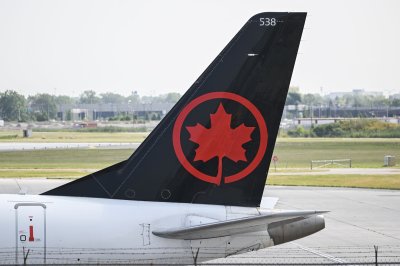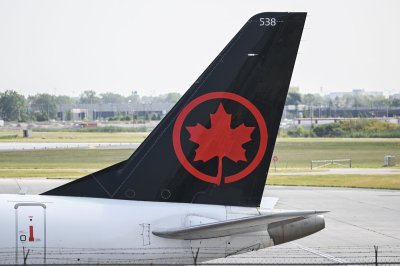KC-46’s Refueling Boom “Nozzle Binding” Issues Are Costing The USAF Tens Of Millions In Damage
U.S. Air Force Air Mobility Command (AMC) on Monday released the findings of investigations into three mishaps involving the troubled KC-46A Pegasus aerial refueling tanker that cost the service nearly $23 million. The incidents all involved nozzle binding, a situation in which the tanker’s refueling boom nozzle gets stuck or binds with the receiving aircraft’s receptacle.
Two of the incidents occurred in 2022 and a third in 2024. A fourth mishap took place July 8, 2025 and is still being investigated, AMC stated. There were no fatalities, injuries, or civilian property damage in any of these mishaps.

The first of these nozzle binding mishaps took place on Oct. 15, 2022. A KC-46A Pegasus assigned to the 305th Air Mobility Wing and operated by the 2nd Air Refueling Squadron, Joint Base McGuire-Dix-Lakehurst, New Jersey and an F-15E Strike Eagle assigned to the 4th Fighter Wing and operated by the 335th Fighting Squadron, Seymour Johnson AFB, North Carolina, were conducting routine air refueling operations.
“During the mishap, a nozzle binding accident occurred during a breakaway which resulted in the air-refueling boom (ARB) striking the tail section of the KC-46A,” AMC said in a statement.
The Accident Investigation Board (AIB) found that a “preponderance of the evidence” showed one cause for the mishap.
“Due to a limitation of the Air Refueling Boom (ARB) control system,” the KC-46 boom operator “inadvertently placed a radial force on the ARB that caused the nozzle to become bound in the receiver’s receptacle,” according to the AIB. “As a result, the bound forces exceeded the structural limitations of the ARB and caused a rapid upward movement of the ARB when released, striking the tail cone” of the Pegasus.
In addition, two other factors “substantially contributed” to this incident.
The Pegasus pilot failed to notify either the plane’s boom operator or the Strike Eagle’s pilot about an “engine power reduction” on the refueler.
“This action, combined with the known ARB stiffness limitation and the resulting high engine power setting on [the F-15E], resulted in “a rapid forward movement” of that jet relative to the Pegasus.
In addition, “due to a limitation of the automated boom control system, the ARB entered an uncontrollable state during its upward motion toward the aircraft tail, disabling the boom control laws which could have slowed the rate at which the ARB struck the tail cone, substantially contributing to the mishap,” according to Col. Chad Cisewski, who led this AIB.
The estimated damages to the aircraft were $8,307,257.93, according to AMC.

Less than a month later, on Nov. 7 2022, there was another nozzle binding incident while a KC-46A Pegasus assigned to the 305th Air Mobility Wing and operated by the 2nd Air Refueling Squadron was refueling a F-22A Raptor assigned to the 94th Fighter Squadron, Joint Base Langley-Eustis, Virginia. The flight was in support of a joint-force training exercise from Tyndall Air Force Base, Florida.
“During the second air refueling attempt of the sortie, the KC-46A experienced a nozzle binding event during a breakaway with the F-22A, which resulted in damage to the ARB nozzle,” AMC said in its statement. “The bound forces exceeded the structural limitations of the ARB nozzle, damaging the nozzle beyond repair.”

The AIB determined “by a preponderance of the evidence, one cause for this mishap,” the report stated. The boom operator “made manual control inputs to the ARB which caused a radial force to be applied to the ARB nozzle, causing it to become bound inside the receiver’s air refueling receptacle.”
As a result, “the bound forces exceeded the structural limitations of the ARB nozzle, damaging the nozzle beyond repair.”
Two other factors “substantially contributed to the mishap,” according to the AIB. The first was “the failure” of the Raptor’s pilot “to account for the KC-46A Stiff Boom characteristics, causing a rapid forward movement” of the fighter relative to the refueler. The stiff boom probem is a long-standing issue, which you can read more about here.
In addition, the boom operator was “unable to verify that the ARB nozzle was clear of [the Raptor’s] air refueling receptacle prior to making ARB control inputs, substantially contributing to the mishap.”
The mishap caused an estimated $103,295.12 in damages, AMC noted.

A third nozzle binding incident took place Aug. 21, 2024, when a KC-46A Pegasus assigned to the 22nd Air Refueling Wing and operated by the 931st Air Refueling Wing was refueling an F-15E assigned to the 366th Fighter Wing in support Operation Nobel Eagle, North American Aerospace Defense Command (NORAD) aerospace warning, control, and defense missions in North America. The aircraft were helping to enforce a temporary flight restriction related to a presidential visit. Then-President Joe Biden was reportedly vacationing in Santa Ynez, California at the time. The tanker and one of the fighters were forced to make emergency landings — the F-15E twice having to abort those recoveries before finally touching down at an alternative location. You can read more about that in our initial report here and listen to the audio below.
During the fourth air refueling attempt of the sortie, “the KC-46A experienced nozzle binding of the boom in the F-15E receptacle,” AMC explained. “Upon release, the boom rapidly flew upward, striking the bottom aft portion of the KC-46A, and violently oscillated left and right.”

The boom striking the aircraft and “ensuing forceful oscillations resulted in critical failure of the boom shaft structure, portions of which detached from the KC-46A in flight,” the command continued. “The KC-46A crew declared an in-flight emergency and returned to Travis AFB. Emergency response personnel met the crew upon arrival.”
The boom fell in an open field about 13 miles northeast of Santa Maria, California, with no injuries or fatalities reported, the AIB explained.

The AIB found, “by a preponderance of the evidence, that the cause of the mishap was the [boom operator’s] control inputs to the air refueling flight control system, resulting in an excessive fly-up rate of the boom, which struck the aircraft empennage and caused a critical failure of the boom shaft structure,” according to the report.
There were four other factors that “substantially contributed to the mishap,” the AIB board president ruled.
- Excessive closure rate and instability of the Strike Eagle.
- The boom operator’s “attempted contact outside the standard [aerial refueling] envelope for the F-15E.
- The F-15E pilot’s “failure to recognize and initiate immediate breakaway procedures, which further delayed positive separation from the KC-46A,” and
- The boom operator’s “lack of knowledge on boom flight control logic and its effects on the boom flight control surfaces prevented the [boom operator] from recognizing the influence of Flight Control Stick (FCS) inputs and programmed boom limit functions during operations, especially during nozzle binding situations.”
The estimated damages to the aircraft were $14,381,303, according to AMC.

The Air Force did not release details about the July 9, 2025 incident. However, at the time, 2nd Lt. Samantha Bostick, Deputy Chief of Public Affairs for the 22nd Air Refueling Wing at McConnell Air Force Base, told us what happened.
“A KC-46A Pegasus from McConnell Air Force Base declared an In-flight Emergency July 8, while operating over the eastern United States, refueling F-22s,” she said. “The crew had to make the decision to land at Seymour Johnson Air Force Base, N.C., and has landed safely there. The aircraft will remain there for the time being.”
You can listen below as the crew of the KC-46, callsign FELL 81 and serial number 17-46033, alerts the U.S. Navy’s Fleet Area Control and Surveillance Facility at Virginia Capes (FACSFAC VACAPES) about losing the boom. FACSFAC VACAPES is better known by its callsign, Giant Killer, and helps monitor for threats and otherwise manage the airspace off the east coast of the United States.

In general, KC-46s are no stranger to issues with their booms. The boom and the control system for it have been a source of serious and persistent technical issues for the Pegasus fleet for years now. A fix for the KC-46’s particularly troublesome remote vision system (RVS), which boom operators in the tanker’s main cabin use to perform their work, is now unlikely to be finished before summer 2027, roughly three years behind schedule, according to Defense News.
The nozzle binding issue is clearly a problem in many respects, not just in terms of the dangers posed by booms breaking away or impacting the receiver or the tanker’s airframe, but it also poses a real danger to those on the ground. Beyond that, the reliability of any type during critical missions is always a concern, as such a mishap could curtail a high-priority mission or the risk of it occurring requires extra increasingly precious tankers being assigned to those operations as a contingency. What we don’t know is how common this is in comparison to the KC-135 or the recently retired KC-10. Hopefully, we can get more clarity in this regard now that the findings of these mishaps are published.
We will update you when we find out more.
Contact the author: [email protected]


